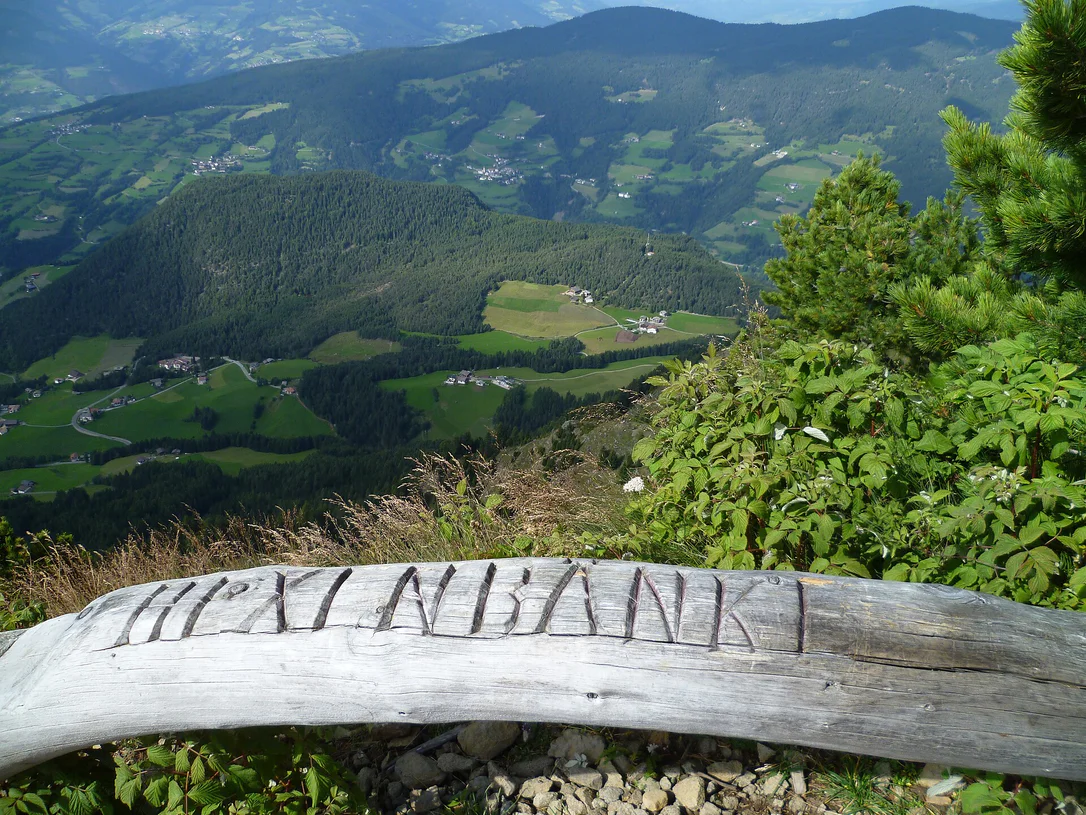[[For the "Gasthaus Hippolyt: https://gasthaus-hippolyt.it, Tel. 0039 0473 42 00 37]]
The St. Hippolyt church in the north of the municipality of Tisens/Tesimo, near the village of Völlan/Foiana and above Lana, dominates the hill of St. Hippolyt in Naraun/Narano, which is visible from afar.
This is not only a popular and easily accessible excursion site, whose panorama from the mountains of the Texelgruppe all the way down to Bolzano is second to none, but also an ancient settlement and cult site. Finds of Neolithic arrowheads, blades and mortars show that people were already living here in the 4th millennium BC, almost 6,000 years ago, making it one of the oldest prehistoric settlement sites in South Tyrol. There is also evidence of a prehistoric sanctuary on the hill.
The little church of St. Hippolyt was first mentioned in 1288, but is probably much older - not least because of its rare patron saint. Parts of the nave walls and the offset round apse still bear witness to the Romanesque church. The two pointed-arched slit windows and the likewise pointed-arched entrance door with rosette in the west were created during reconstruction work in the Gothic period. Towards the end of the 17th century, the tower was added (a votive picture from 1679 still shows the church without a tower, but with a choir bell wall). The bell was cast in 1566 by Simon Hofer and is thus the oldest surviving bell in the parish. The barrel vault in the nave was inserted in 1762 (see date on the triumphal arch).
Inside the church, the altar and the pulpit date from the 2nd half of the 17th century, the statues of St. Isidore and St. Roch, as well as the image of St. Hippolytus from the 2nd half of the 18th century.
As Saint Hippolyt is also venerated as the patron saint of the weather, ringing the bells in thunderstorms were once part of the duty of the sacristan of St. Hippolyt in Naraun. Due to the exposed location of the church, however, lightning strikes occurred time and again. Since the 17th century, no fewer than six deaths during weather ringing have been recorded in the parish's death register, which is why the little church was given the nickname "Zum bösen Segen" (to the evil blessing).
The church is only open on certain holidays. However, the hill offers a wonderful panoramic view all year round.
The path of reflection to the Luminous Rosary and in memory of Pope John Paul II, built in 2010, leads to the church. Six bronze reliefs with the mysteries of the Luminous Rosary and a portrait of the deceased Pope await the pilgrim on the way. They are works by the artist Robert Giovanazzi from Merano, which were realised by the art founders Stefan and Vinzenz Dirler, natives of Prissian/Prissiano.














































































